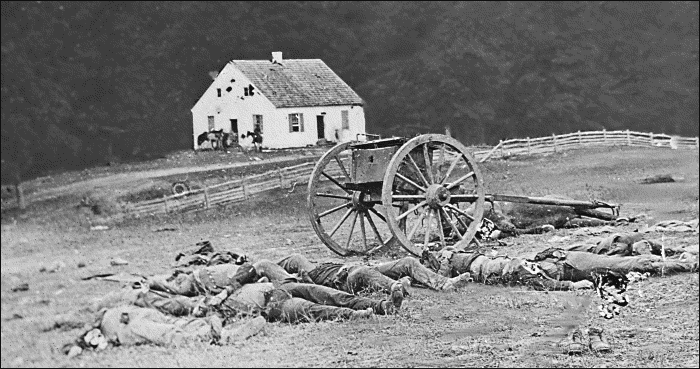Forensic Case Files: 147 Years After The Battle of Antietam, A Union Solider Finally Comes Home
/
The young man was killed at the Battle of Antietam on the bloodiest day of fighting in American military history. Not yet out of his teenage years, he was struck down in Miller’s corn field on September 17, 1862, one of 23,000 men killed during a mere twelve hours of fighting. Hastily buried the next day, it was intended that his remains would be properly interred as befitting a soldier who died fighting for his country. But four years later, when the dead were collected and moved to the Antietam National Cemetery, his resting place at the edge of the corn field was missed. He lay undisturbed for another 142 years until his remains were discovered in October 2008.
It was a ground hog that made the discovery. As he tunneled under the corn field, he found human bones lodged in the earth and promptly removed them from his path. Luckily, a sharp-eyed visitor to the Antietam National Battlefield spotted a human jaw bone mixed into a pile of loose dirt beside the ground hog hole. Upon investigation, the National Parks staff discovered several more bone fragments, some scraps of leather and a Civil War era button in the same area. At that point, they knew they’d found an unmarked burial.
National Park Services’ archeologist Stephen Potter was called in to excavate the site.

Unfortunately, the ground hog had badly damaged the soldier’s bones as he gnawed on them for their calcium content. But along with the bones, Potter and his team found several items that provided crucial information about the missing soldier: A handful of buttons marked the solider as a member of one of the New York Regiments that fought at the battle of Antietam, and a cracked and tarnished belt plate bearing the stamp ‘U.S’ reinforced his identify as a Union soldier.


Forensic anthropologist Doug Owsley, head of the Division of Physical Anthropology at the Smithsonian National Museum of Natural History, examined the recovered bones. Based on an impacted wisdom tooth in the jaw, lack of extensive dental wearing and an open suture in the skull, he judged the solider to have been between 17 and 19 years of age. But even for so young a man, he was clearly a veteran – mixed in among the New York regimental buttons were several general issue Union buttons, indicating that he’d been in the army long enough to require the generic replacement of his original buttons.
In the end, a final identification was not possible. Between the infantry, artillery and cavalry, 86 units from New York were present at Antietam that terrible day. Even when the list was narrowed to the 24 units fighting in the area of the corn field where the remains were discovered, there were simply too many men still listed as missing-in-action for a definitive ID.
He was brought back to New York in 2009. On September 17, 2009, on the 147th anniversary of his death, he was laid to rest at the Saratoga National Cemetery with full military honours. His identity lost forever to time, he is now simply the Unknown Soldier, ‘known but to God’.

Photo credit: The Washington Post and Bill Schaaf



 27.6%
27.6%